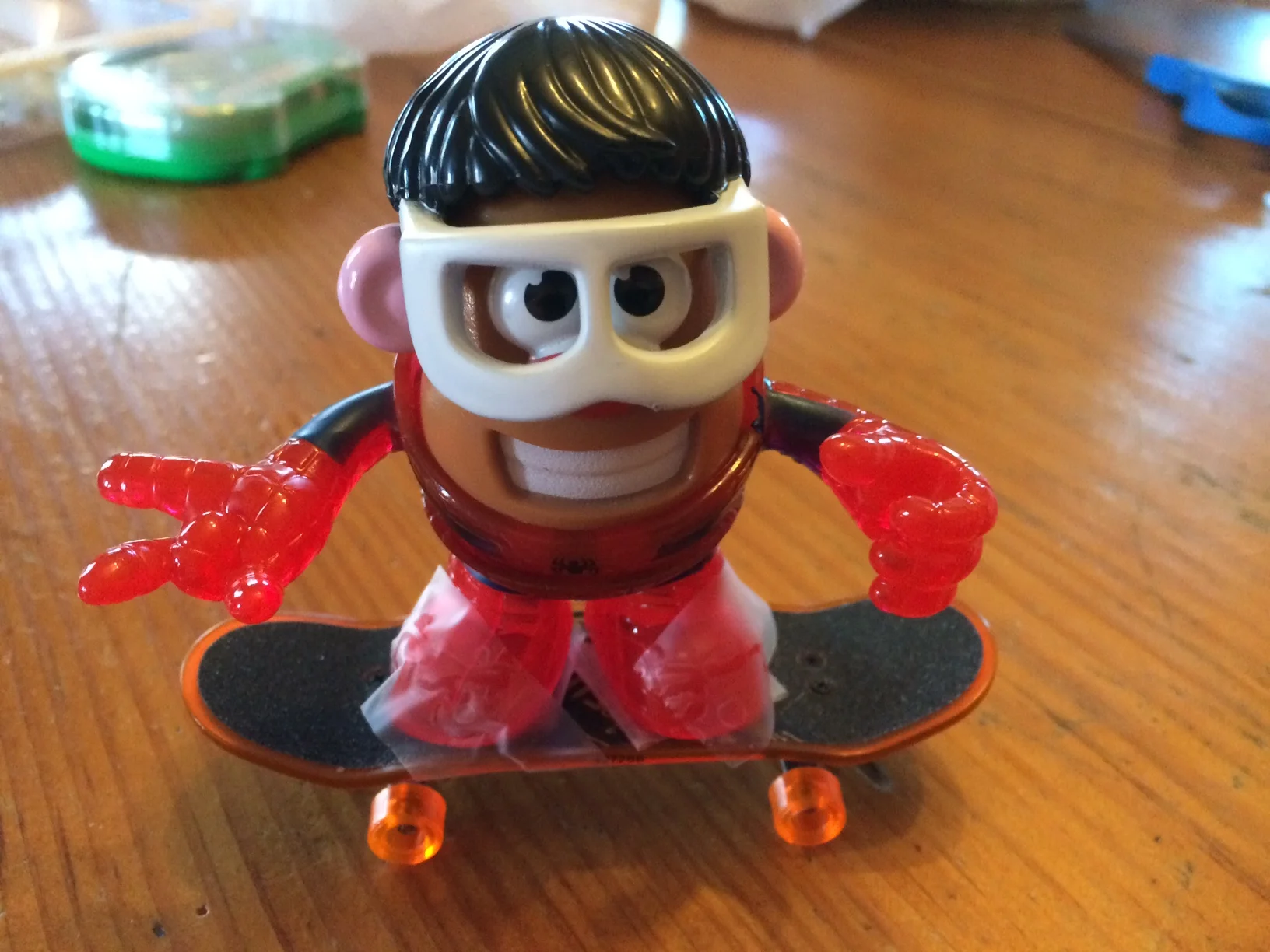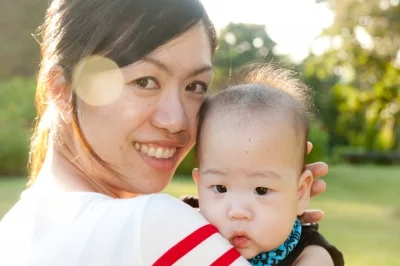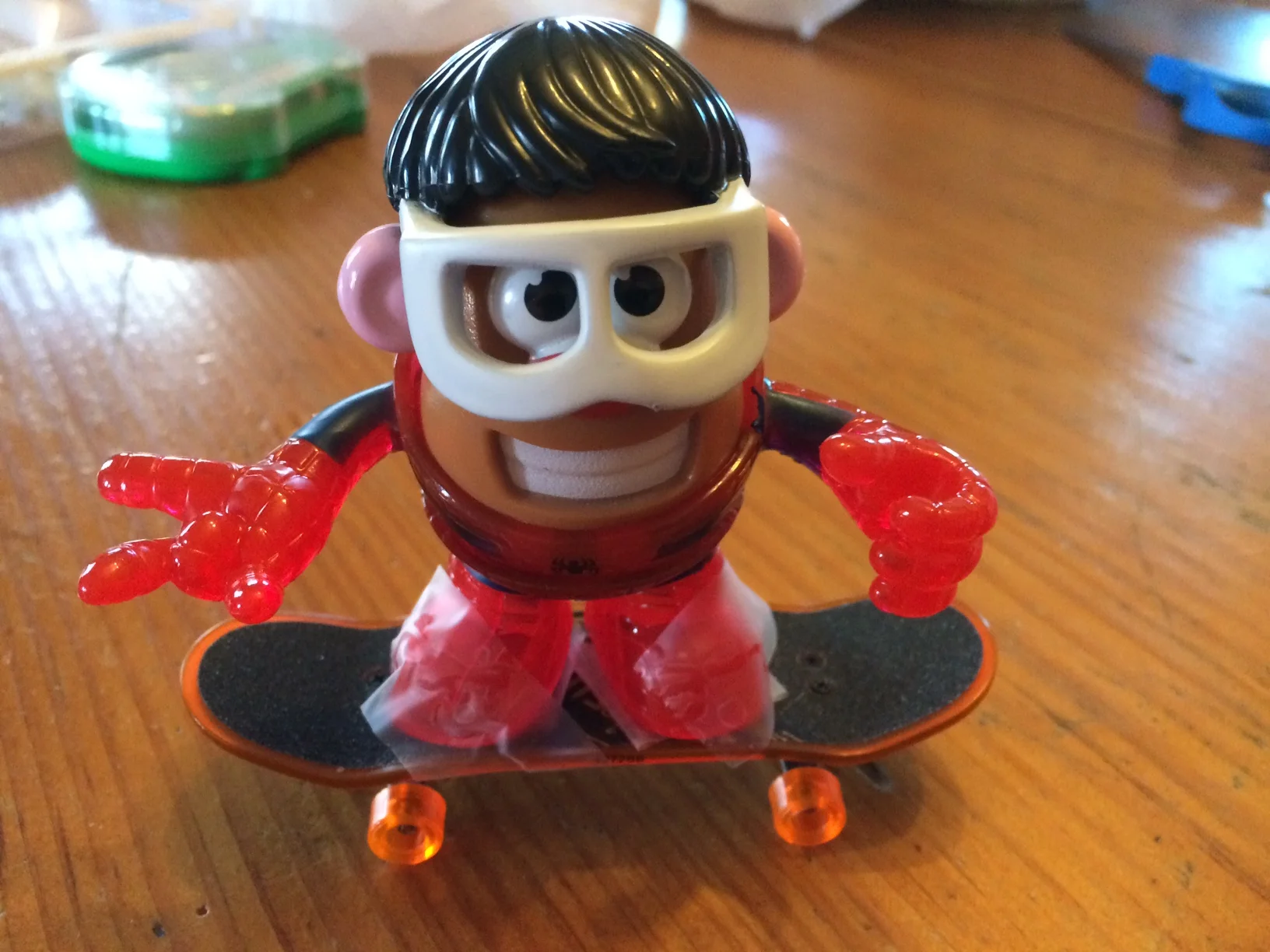A crash course in design thinking
I took Product Design and Development in fall 2014 at Babson College and chose to work on a project sponsored by Hasbro to create a learning toy for children ages 2-5. The process included stating the need, conducting user interviews, formulating hypotheses, creating prototypes, testing, and conducting research on markets and pricing.
We began with interviews of parents. Each interview was 10 minutes long and asked open-ended questions about how parents choose which toys to buy. We used the insights to group findings, create detailed user personas, and draw a journey map.
“How might we create a learning toy for children ages 3-4?”
We brainstormed over 20 different toy ideas based on what knew about our user. When we presented the list to our client, Hasbro chose six they believed had the most potential. We selected two ideas from this list to progress to the mockup phase: "Mr. Potato Head Adventures" and "Fun Grenade." Both ideas involve throwing the toy, which we discovered to be an opening in the market (most toys aren't designed to be thrown, but kids love to throw things).
Hasbro provided the insight that learning extends beyond math and science and includes learning fine motor skills and that what goes up must come down. Our two concepts had creative play front-and-center with learning about physics baked in.
"Mr. Potato Head Adventures" started as a parachute attachment that plugs into his back so kids can throw him up in the air, and evolved into a line of adventure toys that plug directly into his potato body.
“What is? What if? What wows? What works?”
We decided that Fun Grenade could occupy a more differentiated place in the market and chose to refine this prototype. The idea behind the Fun Grenade is a big ball that contains smaller balls, and the big ball pops open and casts the small balls around the room. Initial ideas for how to scatter the parts included spring tension, levers, and air-powered tubes.
The box and lever prototype wasn't very fun, the air-powered version didn't have the power to scatter the toys, and we couldn't build a safe version that used spring tension.
We tested a manual version of the air-powered version and learned that kids love when the toys scatter so they can bring them together again.
“Puzzle Ball is a soft, throwable shape sorting toy for 3-4 year olds.”
The final prototype evolved into a shape-sorting toy made of soft, throwable pieces. We named it "Puzzle Ball" and created 10 animal shapes that fit into holes cut specifically for each animal. When the child shakes the ball it causes the pieces to fly around the room. The pieces can be stored inside the ball when playtime ends.
Hasbro said they had never thought of combining soft, squishy toys with a shape sorting toy and they planned to take the idea forward with toy developers for refinement.


